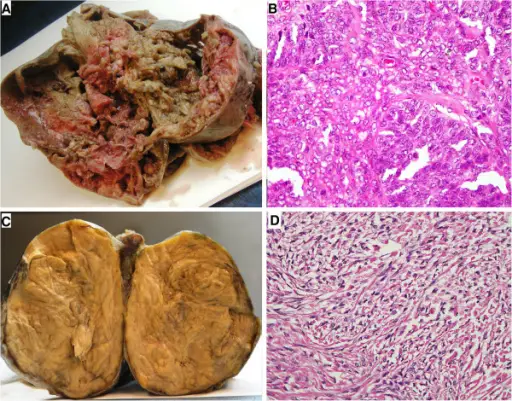Granulosa cell tumors are that which arise from granulosa cells. They are estrogen secreting tumors and present as large, complex, ovarian masses.
What is the Pathology of Granulosa Cell Tumors?
The pathology of granulosa cell tumors is:
-Etiology: The cause of granulosa cell tumors is unknown.
-Genes involved: GSP oncogene, AKT gene, FOXL2, C134W.
-Pathogenesis: The sequence of events that lead to granulosa cell tumors.
-Morphology: The morphology associated with granulosa cell tumors shows unilateral, Encapsulated with smooth lobulated surface.
-Histology: The histology associated with granulosa cell tumors shows trabecular and corded, insular, microfollicular patterns.
How does Granulosa Cell Tumors Present?
Patients with granulosa cell tumors typically females of wide age range, most common in postmenopausal women with peak age 50 – 55 years. The symptoms, features, and clinical findings associated with granulosa cell tumors include abdominal pain and abnormal vaginal bleeding, menorrhagia, irregular menstruation, or amenorrhea.
How is Granulosa Cell Tumors Diagnosed?
Granulosa cell tumors is diagnosed by pelvic examination, ultrasonography, CT scanning, and biopsy.
How is Granulosa Cell Tumors Treated?
Granulosa cell tumors is treated by surgical excision, hormone modulation therapy, chemotherapy, and radiation therapy.
What is the Prognosis of Granulosa Cell Tumors?
The prognosis of granulosa cell tumors is good. But homozygous FOXL2 mutation and chromosomal imbalance are associated with early relapse and worse outcome.



